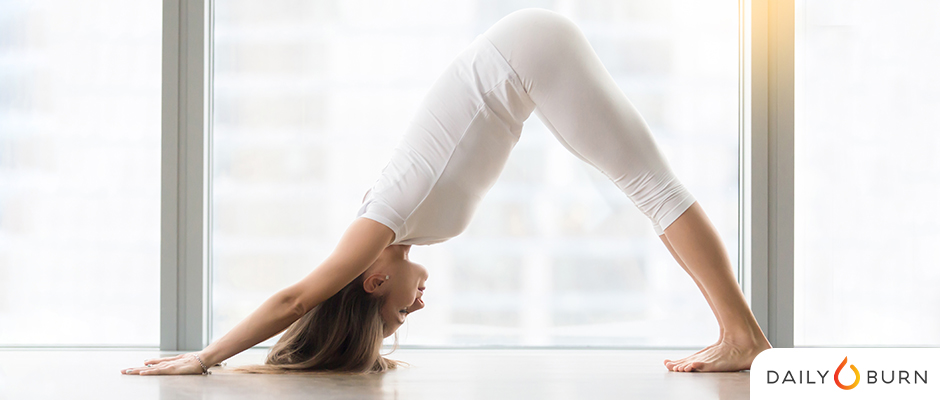
People from all over the world have discovered that yoga is an excellent form of pain relief. The exercises can be done by anyone, regardless of what level they are at. Yoga is more than a stretching and strengthening exercise. It's also a spiritual practice. In India, yoga was originally used to treat physical ailments, including knee, back, and neck pain. Yoga may be an option depending on your level of pain.
Yoga for pain relief helps the body to balance itself. This helps people who suffer from chronic pain manage it better. These exercises decrease inflammation, improve mobility, and reduce pain perception. It is vital to speak with your physician before beginning any yoga program. This will enable you to create a plan that works for you, and give you the best results. These yoga exercises will teach you how mindfulness is important.

For women, the most common problem is headaches. It can be caused by hormone imbalances, stress, poor sleeping habits, or hormonal imbalances. A holistic approach to yoga for pain relief can ease the symptoms and reduce the frequency of headaches. Additionally, headaches often start in the neck. It is possible to alleviate neck pain by doing yoga in this area. It is important to consult a doctor before you start yoga. However, a qualified instructor can give guidance about the best positions for your condition.
Many people think of yoga as relaxing and stretching. However, it can help those with chronic pain. Regular yoga practice can increase quality of life, and lower pain levels. This type of exercise will not work for everyone, but it is a great way improve your overall health. The benefits of yoga for pain relief are numerous, so you may want to consider taking a class or two.
When you're looking for a holistic treatment for your pain, you'll find a variety of techniques that can help you relax. One of the most powerful techniques is to control your breathing. Visualization can also help you manage pain. Visualization is a powerful tool that helps you to focus on the pain and let go of any tension. Visualization can provide relief for the mind and body.

It is important to find a class that meets your specific needs when choosing a yoga instructor. Some classes are slower and more gentle than others, while some have more challenging poses and poses. To find the right type of yoga for you, consult a professional. If you have back pain, you will want to choose a class which is gentle and comfortable for you. Although most classes can help you strengthen and stretch your back muscles, they won't cause any severe injuries.
FAQ
Can I go to a gym 7 days per week?
Yes, you can go to the gym seven days a week but not all at once. It is important to find a time and place where you can exercise without feeling tired or exhausted.
This will help keep you motivated and give you energy for other activities.
You should also ensure that your meals are well-balanced. This will help you not feel tired or slow at the gym.
You must ensure that you don't have any other competing demands on your time. If you have children, it is a good idea to avoid going to school on the evenings as they can distract from your workout.
What's a good workout plan for 7 days?
A seven-day exercise program should consist of three days per week of cardiovascular training (running, biking, swimming), two strength exercises (using free weights, weight machines), and one flexibility/core workout (yoga, Pilates). Each activity must be completed at least once per week. Each session should not last more than 45 minutes.
Cardiovascular Exercise: Running, Biking, Swimming
Your goal is to exercise at least 60 minutes each week. Aim for 75 minutes per week to get the best results. Cardio exercises can help improve blood flow and stimulate muscle growth.
Strength Training
Cardio exercises focus on the heart and lungs while strength training targets muscles and bones. Strength training is a great way to build lean muscle mass that helps you burn calories even if you are not actively exercising.
Flexibility & Core Workouts
Your whole body will be stronger if you have flexibility and core training. Both yoga or Pilates are great options.
How many calories should you consume each day?
This can vary from person to person. An average person needs 2000-2500 calories per day. The factors that determine how many calories are needed for you include your gender, age, height, activity level, lifestyle, and gender.
How many times per week do I need to exercise?
It all depends upon how much time you have and what type or exercise you prefer. An average guideline is to do moderate-intensity aerobic activity 3 to 5 days per semaine. It's important that you don't overdo it. You will get the maximum benefits from your workouts if you do not exercise consistently.
Which exercises are most effective for me?
It all depends on what type of fitness goals you have. Some people prefer endurance sports like swimming, cycling, or running. Others love lifting weights or using resistance bars. There are many exercise programs on the market today. Pick the option that fits your needs.
Statistics
- By John Thompson Take a whopping 38% off a set of PowerBlock Pros. (menshealth.com)
- Are You One of the 20% of Guys (mh.co.za)
- 10 pounds in a month is likely during a lean bulking phase, especially for beginners. (muscleandstrength.com)
- According to the American Heart Association, blood pressure should be checked at least once every two years, beginning at age 20. (my.clevelandclinic.org)
- According to the American Academy of Dermatology (AAD), men over 50 are at a heightened risk of developing it. (healthline.com)
External Links
How To
What nutrients does a man need daily?
Men need healthy growth and development. The body requires vitamins, minerals, proteins, carbohydrates, fats, water, fiber, and other essential elements.
You also need specific nutrients for different times in the day. You can see that your body uses energy to make hormones. When you get up, protein is used to repair and build muscle.
Your body uses the night to break down fat and store extra energy as glucose. Your body still requires sufficient nutrients and calories even though it needs less calories. You can have a snack at night if you feel hungry.
For your body to function properly, it needs adequate amounts of protein and carbs. If you train hard, you may experience muscle soreness after exercising.
To prevent this, you must consume carbs and protein within 2 hours of training. Your body will use stored glycogen to produce glucose for energy.
In addition, you must consume protein immediately after completing your workouts. This prevents muscle tissue from being broken down while you are sleeping.
Your body produces lactic acid during high levels of physical activity. It builds up in your bloodstream, which can lead to fatigue. You can avoid this by eating carbohydrates-rich foods like fruits and veggies.
Carbohydrates can give your body the energy it requires to recover from intense exercise.
A healthy diet should include lean meats such as fish, eggs and milk, cheese, yogurts, beans, seeds, nuts, and beans.
All these foods are high-quality sources of protein. Protein promotes muscle growth and repairs damaged tissues. Protein also supplies the amino acids your body requires to make sex hormones, such as testosterone.
You also need enough dietary fats to maintain good skin, hair, nails, and joints. Healthy men should consume between 20% to 35% of their daily caloric intake from fat.
Fat can help keep your heart healthy and protect you from cancer. It helps keep your brain working properly.
Most of the fat you need can be obtained from vegetable oils, including sunflower oil (or soybean oil), peanut oil, peanut oil, soybean oil, and peanut oil.
These oils contain high levels of monounsaturated fat acids (MUFAs). MUFAs are good for lowering cholesterol and reducing inflammation. They also protect your cells from damage caused by free radicals.
Saturated oils (SFAs), found primarily in animal products such meats, dairy products and butter, are known to raise LDL ("bad") cholesterol. SFAs increase LDL ("bad") cholesterol, and increase triglycerides. They are also good for weight loss and belly fat.
Plant-based oils such as vegetable oil, nuts, seeds, or grains are rich in polyunsaturated fats (PUFAs). PUFAs help improve cardiovascular function, and lower inflammation. They also reduce blood sugar, cholesterol, and other inflammatory factors.
Low HDL ("good") cholesterol can lead to erectile problems in men. The consumption of saturated fats raises bad cholesterol which in turn lowers good cholesterol.
Men who eat lots of red meat or pork can develop prostate problems. This is because these foods contain high amounts of nitrates. When heated, nitrates are converted to nitrosamines. These compounds can cause cancer.
Most processed meats contain nitrites or other harmful chemicals. Avoid them completely.
According to the American Heart Association, you should limit your consumption of red meat to no more that 2 meals per week. Choose poultry, fish and legumes instead.